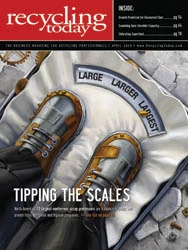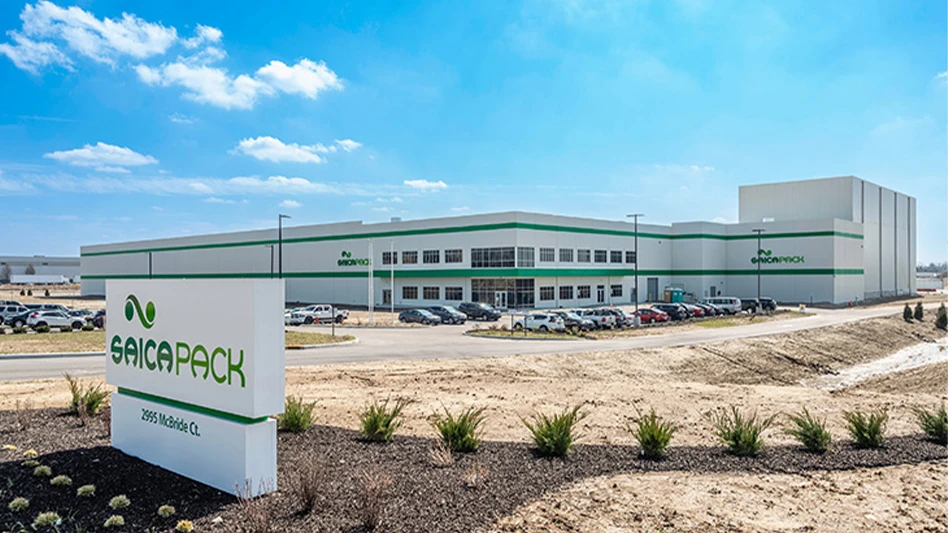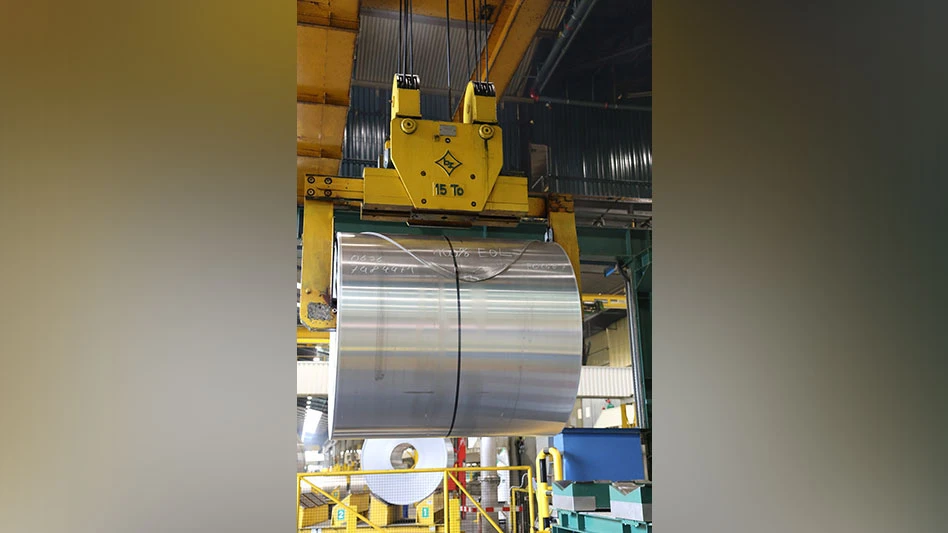The expectations for the first quarter of 2010 are influenced by the state of the ferrous scrap and steel industries at the end of 2009. Prices increased in December of last year. Whether the beginning of 2010 would be a continuation of that trend, nobody really knew. In my opinion, most of the mills covered their scrap material needs for January and February of this year in late 2009 before coming back in early 2010 to do additional purchasing for March and April.
I believe the second quarter of 2010 will be worse than the first. Instead of going up, we will go down again. Instead of going forward, we will go backward.
A DEVELOPING PICTURE
New pictures of the Italian steel and foundry industries have begun to emerge in 2010. A lot of businesses that I currently work with will likely disappear. This year will be a year when we determine who is going to survive and who will die.
In 2011 we will have a firmer recovery. I think that the first six months of 2010 will show where we actually stand. So far we have been complaining and saying that the market is bad. But, in 2009, one way or another, we managed to survive.
| FAIRER WEATHER |
|
According to the Beijing-based metals recycling news service TopRecycle, as of February 2010 the Chinese steel industry in the East China/Shanghai market had continued to churn out steel at a steady clip. “Early in February, the steel market has continued its rising trend, and some major steel mills maintain the momentum of raising prices,” TopRecycle reports. “At this stage, the market has sent a clear signal of rising [steel] prices, [and] it will naturally attract the small and medium-sized private steel plants to increase production, and then it will boost the raw material price of scrap,” the report notes. One concern the authors of the TopRecycle report express comes in the form of worrying whether finished steel inventory may be building. “On the whole, the domestic steel market has sunk into a dilemma, as on one hand, due to continuous steel inventory rising, the [government] may try to dampen the price at any time, thus resulting in an irrational market price fall.” As of early February, however, “The price of raw materials has provided strong support—prices of iron ore, coke, steel scrap and other prices continue to rise,” reports TopRecycle. “The production cost of steel products has been pushed higher, therefore, its price downside potential will be constrained. In the confrontation between the two forces, it is expected that short-term domestic scrap prices will remain within a narrow range and its downside potential will be very limited.” TopRecycle also says iron and steel scrap activity increased in the North China/Tianjin-Baoding market as of early February. “It is reported that the actual turnover of steel and iron scrap in Jinghai [and the] Tianjin market has turned better since the start of 2010,” TopRecycle notes as of early February. TopRecycle and its sources within the steel and recycling industries were uncertain what to make of the future of the steel and ferrous scrap market at that time. “With the upcoming Spring Festival holidays, there are mixed views amid the enterprises: some enterprises remain concerned about a repeat of the falling trend that occurred after the Spring Festival of 2009. On the other hand, there are other enterprises that see the cold-roll steel coil price as likely to continue climbing.” One restraint on scrap supply involves customs procedures. “Tianjin Customs are making strict checks of imported containers presently, causing low clearance. As a result, steel scrap price will maintain stable mainly before Spring Festival,” according to TopRecycle. Those seeking more information about the TopRecycle news service can visit the company’s Web site at www.TopRecycle.com. – Brian Taylor |
2010 is going to be the year companies confirm their positions in the market. The reduction in Italian production was really important, and market observers wonder what is going to happen in 2010, especially with the rebar production.
I believe we have under-evaluated the economic crisis. We thought that 2009 was by far the worst of the crisis. But in Italy, as elsewhere, we had such a wonderful 2008 that we have been continuing on with that success in mind. Now the companies and buyers that did almost nothing in 2009 will have to face another year of uncertainty.
In Italy, we largely live off of exports to North Africa, mainly to Algeria. In the United Arab Emirates, which was another popular export destination for Italian scrap dealers, we had to stop sales last year.
The strengthening of the euro against the U.S. dollar has not really helped Italy. Despite this, we have Spain behaving quite aggressively at a time when we didn’t expect Spain to be so aggressive. We are wondering how Spain, which was announced to be in a worse position than Italy, managed to take more orders for exports than Italy. But the answer is simple: They kept on producing and kept on buying regularly. In the end, Spanish scrap companies were more competitive than Italian firms, which came as a big surprise to Italy.
Spain and Italy were both selling material to buyers in Algeria. Despite the similar trade situation, Spain was more competitive than Italy.
It was really a fight to the death in the rebar market. We Italians had been trying to push prices upward, and, when we realized we could not, we decreased our asking price, but not by enough.
Italy’s production costs may be higher than Spain’s. In my opinion, we want too much. We’ve been spoiled by wonderful margins in 2008. When executives start earning less, they start to complain that their companies are losing money; however, they are not actually losing money, they are just earning less.
The Spaniards accepted these decreased margins, asking buyers for enough to cover their costs with little to no revenue, but they keep on working.
In my opinion, continuing production and filling available orders would have given companies the chance to survive.
CONSISTENT BUYING
When I speak to somebody who is buying material every three or six months, I wonder how well he or she
| A SLOWER STEEL PACE |
|
World crude steel production totaled 1.22 billion metric tons in 2009, marking a decrease of 8 percent compared with 2008, according to figures compiled by the Brussels, Belgium-based World Steel Association (Worldsteel). Steel production declined in most major steel producing countries in Europe, North America and South America in 2009. Contrarily, China, India and the Middle East region in Asia showed positive growth in 2009. China’s crude steel production in 2009 reached 568 million metric tons, an increase of 13.5 percent vs. 2008. The output, which is a record annual crude steel production figure for a single country in a single year, meant that steel mills in China produced close to half (47 percent) of the world’s steel in 2009. Asia produced 795 million metric tons of steel in 2009, roughly 65 percent of the world’s total. The European Union’s 27 nations recorded a decrease of nearly 30 percent less steel manufactured, compared with 2008. The situation was similar in North America, where 82 million metric tons of steel were produced, marking a decrease of 34 percent compared with 2008. Production in the CIS (Commonwealth of Independent States, or much of the former Soviet Union) decreased 15 percent in 2009 compared with 2008. The year ended on a down note, as in December 2009 world crude steel output stalled compared with the month before. After monthly steel output climbed throughout most of 2009, the December figure of 106.4 million metric tons produced was down slightly from the 107 million tons made in November of 2009. Europe’s figures were down most sharply, as the EU went from producing 14 million metric tons of steel in December to just 12.2 million metric tons in November. – Brian Taylor |
understands the market trends.
By being in the market every month, buying what you need, you are going to have an average price for scrap at the end of the year that will enable you to be competitive in your scrap metal sourcing.
If you have been out of the market for six months, when you suddenly find yourself in need of material, you’ll be willing to buy at the highest prices.
EXPORT FORCES
Italy may need further consolidation of its steel industry to remain competitive, allowing the enough steel to be produced to cover our domestic market, with some material available from time to time for export orders.
Without export, we cannot manage to keep steel prices at an acceptable level for our businesses.
However, Italians are not export-oriented in principle and only consider the export market when they are desperate and when the local market doesn’t exist, as was the case in 2009. Italian steel companies were looking for export sales at any price, but always on a spot basis.
Steel producers need to remain consistent in their scrap buying and finished product sales, but, by the time they start to listen, it could be too late.

Explore the April 2010 Issue
Check out more from this issue and find your next story to read.
Latest from Recycling Today
- Green Cubes unveils forklift battery line
- Rebar association points to trade turmoil
- LumiCup offers single-use plastic alternative
- European project yields recycled-content ABS
- ICM to host colocated events in Shanghai
- Astera runs into NIMBY concerns in Colorado
- ReMA opposes European efforts seeking export restrictions for recyclables
- Fresh Perspective: Raj Bagaria





